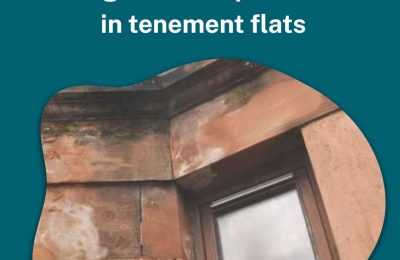Tenants moving into a rented property will likely need to pay their landlord a deposit. For some, this might be the first time they have had to do this, and they might have a lot of uncertainty about what a deposit is and why it is necessary. As the leading tenancy deposit scheme in Scotland, SafeDeposits Scotland prides itself in its efforts to improve education within the PRS for all involved, including making deposit protection as easy to understand as possible.
Is a deposit a requirement?
Deposits are not necessarily a requirement, some landlords may opt not to ask the tenant to pay one, however most will do so as security, should the tenant breach their tenancy agreement. Where a landlord does ask for a deposit, the Tenancy Deposit Scheme (Scotland) Regulations 2011 require that they protect this deposit with a government-approved tenancy deposit scheme, like SafeDeposits Scotland.
The landlord will have 30 working days from the tenancy start date to protect the deposit and provide the tenant with details relating to it, such as the scheme it is protected with and its contact details.
Why is a deposit scheme necessary?
The purpose of a tenancy deposit scheme is to be mutually beneficial to both the tenant and landlord.
Ultimately the deposit that has been paid is the tenant’s money and they should receive it back once the tenancy is over. The exception to this is where they have broken the agreed upon terms outlined in the tenancy agreement, and in this case the landlord may wish to claim part of the deposit, whether it is for cleaning costs or to repair damage.
Having a third party hold on to the deposit for the tenancy means that if there is any disagreement involving the claim, both the landlord and tenant are encouraged to attempt to resolve the dispute and come to an agreement. The landlord cannot unfairly keep the deposit, and the tenant cannot leave the property in poor condition without consequence.
What if there is a deposit dispute?
Deposit schemes will offer free Alternative Dispute Resolution (ADR), which is the encouraged procedure for where a dispute has arisen over a deposit claim at the end of the tenancy, and both parties have tried with no avail to come to an amicable agreement.
ADR will involve an impartial adjudicator assessing submitted evidence and making a decision on whether or not the claim is acceptable, or if the amount should be amended. The adjudicator is an independent party who will never visit the property nor meet with either the tenant or landlord. They will take into account factors such as betterment and fair wear and tear in making their decision.
As it would be the landlord making the claim, the onus is on them to prove their case by providing evidence. The tenant is then given an opportunity to provide counter-evidence to dispute the landlord’s claim. To help prevent any disputes arising at the end of the tenancy, the tenant should study their tenancy agreement and ensure that they follow it to a tee, along with returning the property in the same state as indicated on the check-in report.
What if the deposit hasn’t been protected?
Where the landlord has failed in their responsibility to lodge the deposit with an approved scheme within 30 working days, or has not provided the necessary prescribed information to the tenant, the tenant can raise a case with the First-tier Tribunal for Scotland (Housing and Property Chamber), and the landlord could be ordered to pay the tenant up to three times the original deposit amount. SafeDeposits Scotland has an obligation to notify tenants when a deposit has been protected outside of the 30 working days window.











